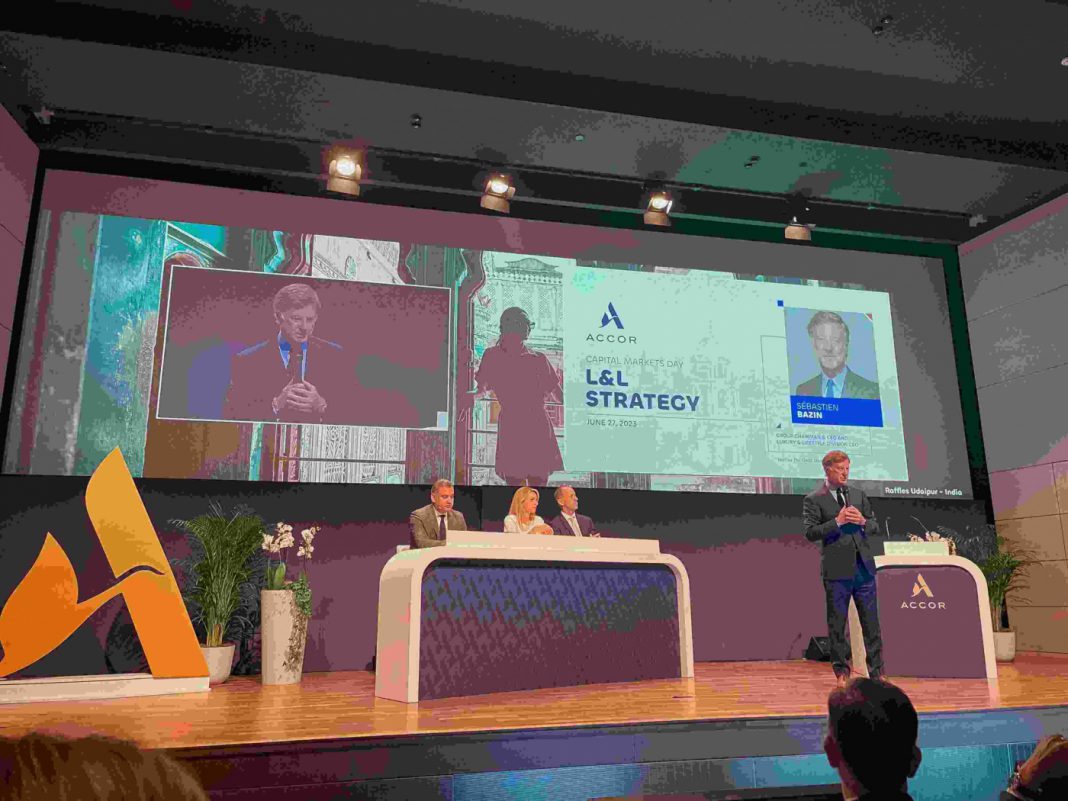During its Capital Markets Day, Accor presented its medium-term ambitions for a new chapter of growth. The company plans to open more than 1,200 hotels in the next five years, thus increasing the number of its resorts by more than one-fifth.
With strong brands and highly skilled teams, a simplified and optimized operating model and processes, Accor intends to accelerate its sustainable growth, taking full advantage of the strengths of each of the two new divisions created in January 2023. For each of them, Accor has defined clear strategic priorities.
The Premium, Midscale and Economy Division (PM&E):
To maximize growth in EBITDA, the Premium, Midscale and Economy division (PM&E) is organized by geography and focuses on three priorities:
-its brands: by consolidating the leadership of its three iconic brands (ibis, Novotel and Pullman), increasing network density thanks to its conversion brands (Mövenpick, Mercure, Handwritten and greet), and strengthening compliance with brand standards.
-its key markets: its biggest and most profitable, by consolidating its leadership in Midscale and Economy, and by seizing growth opportunities in the Premium segment.
-the efficiency of its growth model: to take advantage of scale effects with a clear development strategy, enhancing tools and processes as well as discipline on cost control.
The Luxury & Lifestyle Division:
The development of the Luxury & Lifestyle Division, organized by brand, is part of a strategy to strengthen the identity and appeal of iconic brands, offering unique and innovative experiences. The strategic priorities of this division are focused on three areas:
-the brand promise which guarantees unique experiences with each brand.
-the originality and high quality of products and services as a priority to guarantee customer loyalty, attractiveness for owners and a sense of belonging for talents.
-an ambition to generate strong EBITDA growth.
For Sébastien Bazin, Chairman and Chief Executive Officer of Accor: “Over the past 10 years, Accor has undergone a radical transformation. Now Asset Light, the Group has expanded its brand portfolio to become the leader in Luxury & Lifestyle, strengthened its geographical footprint and simplified its organization, while preserving its financial independence and the strength of its balance sheet. With its two recently created divisions – Premium, Midscale and Economy on the one hand, and Luxury & Lifestyle on the other – the Group is embarking on a new chapter of rapid, profitable growth. We have set ambitious targets for the coming years: an EBITDA target for 2023 of between €920 and €960 million, an average annual EBITDA growth rate for 2023-2027 of between 9 per cent and 12 per cent, and a return to shareholders of around €3 billion. We have great talents, unique brands, owners’ confidence, efficient digital tools, the energy and the desire. It’s now a question of execution.”
Digital Distribution
The hotel company is also looking to boost its distribution by focusing on six key areas.
In addition to further enhancing revenue and channel management, the company is looking to add more local partners, especially in Asia.
Revamping its hotel brand websites is also underway, to reflect its new organizational structure, unveiled last year. Novotel and Movenpick websites were relaunched earlier this year and those of Fairmont, Sofitel and Raffles are close to relaunch.
Increasing non-room revenue is another focus as part of the augmented hospitality strategy the company has been talking about for a number of years designed to provide a “bigger experience than just a stay”.
Accor will also continue to focus on its mobile app, which drives about 27 per cent of revenue compared with 18% in 2019. The company’s contact centers are also important, especially for its lifestyle and luxury segment. It was stated that currently 12 per cent of bookings in North America for the Fairmont brand come via contact centers.
Accor’s loyalty strategy will also be enhanced with new partnerships and products. According to guest behavior in 2022, the company witnessed two times more stays from members than non-member, with per night, 10 per cent more spends and 87 per cent of direct bookings. Priorities for the program include adding member rates to global distribution systems, driving membership enrollment with the group’s hotels and adding further subscriptions products.


